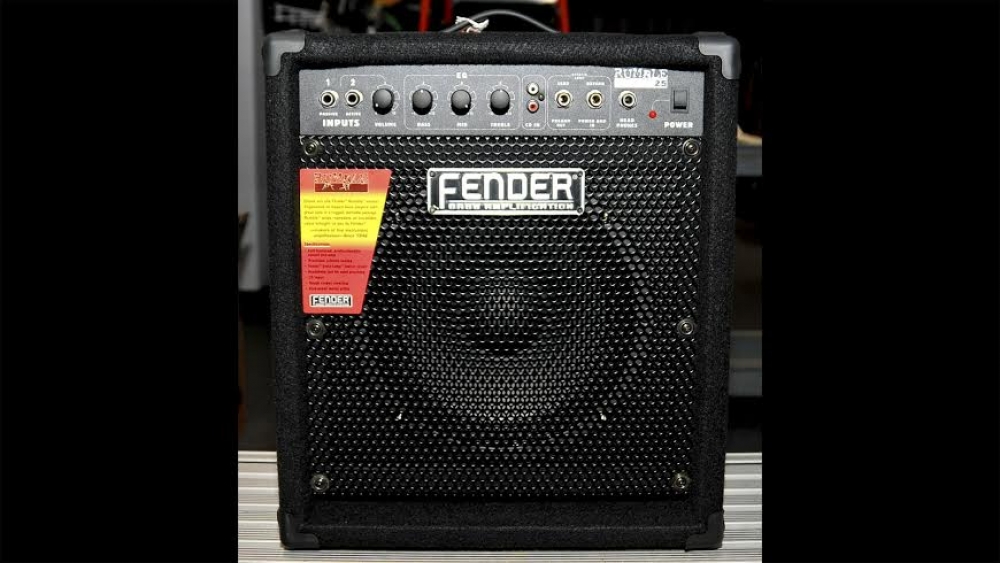
When compared to Rumble 25, it’s significantly different. So, if you feel Rumble 40 is not loud enough, the XLR output line can help you overcome the wattage issues.

It also has an XLR output line that can be used to connect the bass combo amp to a Power Amplifier as and when required. Rumble 40 comes with a headphone connector as well as an AUX input. The 4-band equalizer in Rumble 40 allows you to shape your sound, and the 3-button palette for voicing further sculpts the sound. The 10-inch speaker also provides Rumble with a punch that would be missing otherwise. Even though the speaker is small, the amplifier still has a realistic amount of warmth and depth. The Fender Rumble 40 v3 Bass Combo Amp comprises a 10-inch speaker. 10-inch speaker with special design for enhanced bass punch

It is controlled by the level and drives controls. The amplifier also comes with a gain boost which is actually an overdrive circuit. The overdrive and volume controls are somewhat odd, with a Master knob controlling the overall volume and the Gain control dictating the base level of gain. Other controls are namely Treble, Bass, Gain, High-Mid, Low-Mid, Master, Level, and Drive. Vintage – For giving the amplifier a warmer tone.Contour – For changing the mid-range profile.Here’s what each of them can be used for: The bass combo amp comes with different switches such as Contour, Vintage, and Bright. What’s even better? You can use an optional footswitch to add or remove the overdrive whenever you need additional tonal tenacity. Therefore, with Rumble 40, you can get the perfect amount of overdrive in your sound. It offers a basement-friendly 40 Watts, with blend controls and gains in the overdrive section. It’s the best possible combination of a compact package and high-quality bass tone. Antique feel with contemporary featuresįender Rumble 40 provides beginner as well as experienced bassists with a solid amp. Therefore, make sure your bass combo amp or cabinet has sturdy wheels and handles for convenient portability. Portabilityīass amplifiers typically weight more than conventional guitar amplifiers. The bass combo amp cabinet should be ported or sealed to handle the volume of movement required to produce bass frequencies. Footswitch jackĪ footswitch jack allows you to switch between multiple channels, and control effect without removing your hands from the bass. The important point here is that the amplifier you are planning to buy should readily connect with your speakers or the other recording gear you’re using. Jack options include XLR, ¼”, TRS, and Neutrik Speakon connectors. Since not all the cables and speakers are created alike, having a variety of jacks on the back side of your bass amplifier can come in handy. Some models also come with a 16-ohm impedance option. These switches allow you to pick between a 4-ohm or 8-ohm output to match your connected speakers. Using the direct output, you can connect the bass amplifier to the recording gear or mixer. You’ll find the direct output on the bass amplifier back. They can help you produce a sharper, more intensive sound from the speaker. The damping controls and resonance help you fine-tune the output of the amplifier to your speakers. By finding the ideal gain, you can produce a comforting overdriven sound. Gain controlĪlmost all bass amplifiers allow you to control the extent of overdrive in the preamp stage. You can even power each speaker with a different channel. Some bass amplifiers also come with standalone tone controls for every channel allowing you to change the sounds easily during a performance.


They’re typically labeled as overdrive and clean and provide output to match the sound of your choice. Many bass amplifiers come with two or more channels.


 0 kommentar(er)
0 kommentar(er)
